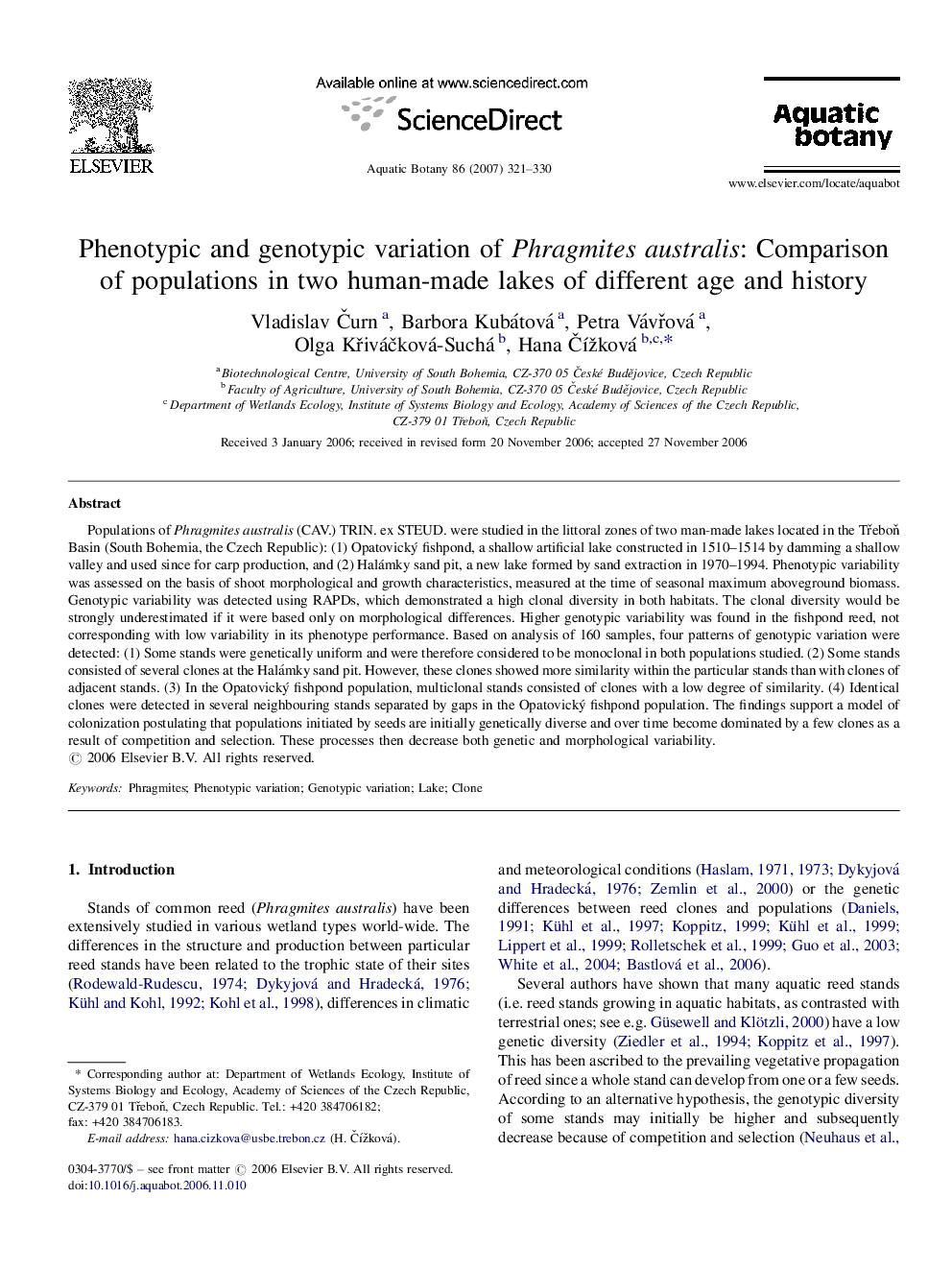| Article ID | Journal | Published Year | Pages | File Type |
|---|---|---|---|---|
| 4528445 | Aquatic Botany | 2007 | 10 Pages |
Populations of Phragmites australis (CAV.) TRIN. ex STEUD. were studied in the littoral zones of two man-made lakes located in the Třeboň Basin (South Bohemia, the Czech Republic): (1) Opatovický fishpond, a shallow artificial lake constructed in 1510–1514 by damming a shallow valley and used since for carp production, and (2) Halámky sand pit, a new lake formed by sand extraction in 1970–1994. Phenotypic variability was assessed on the basis of shoot morphological and growth characteristics, measured at the time of seasonal maximum aboveground biomass. Genotypic variability was detected using RAPDs, which demonstrated a high clonal diversity in both habitats. The clonal diversity would be strongly underestimated if it were based only on morphological differences. Higher genotypic variability was found in the fishpond reed, not corresponding with low variability in its phenotype performance. Based on analysis of 160 samples, four patterns of genotypic variation were detected: (1) Some stands were genetically uniform and were therefore considered to be monoclonal in both populations studied. (2) Some stands consisted of several clones at the Halámky sand pit. However, these clones showed more similarity within the particular stands than with clones of adjacent stands. (3) In the Opatovický fishpond population, multiclonal stands consisted of clones with a low degree of similarity. (4) Identical clones were detected in several neighbouring stands separated by gaps in the Opatovický fishpond population. The findings support a model of colonization postulating that populations initiated by seeds are initially genetically diverse and over time become dominated by a few clones as a result of competition and selection. These processes then decrease both genetic and morphological variability.
